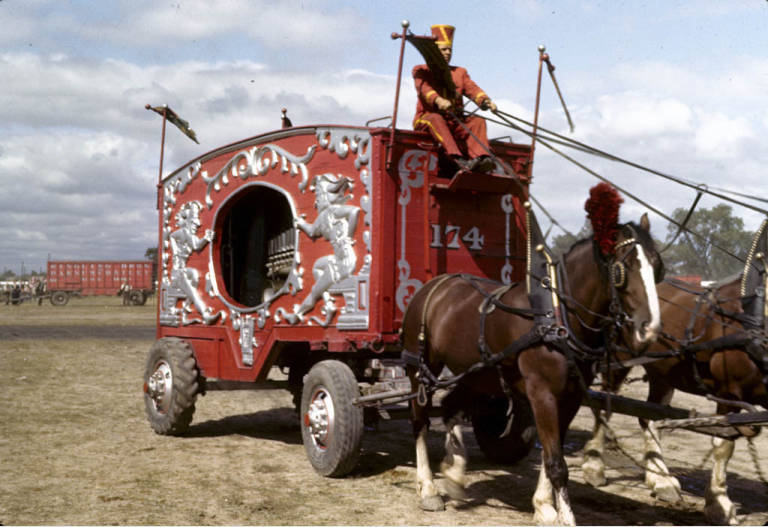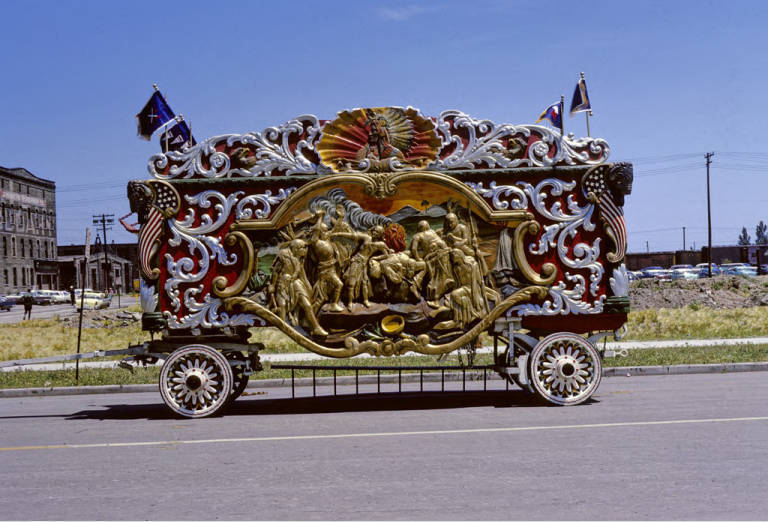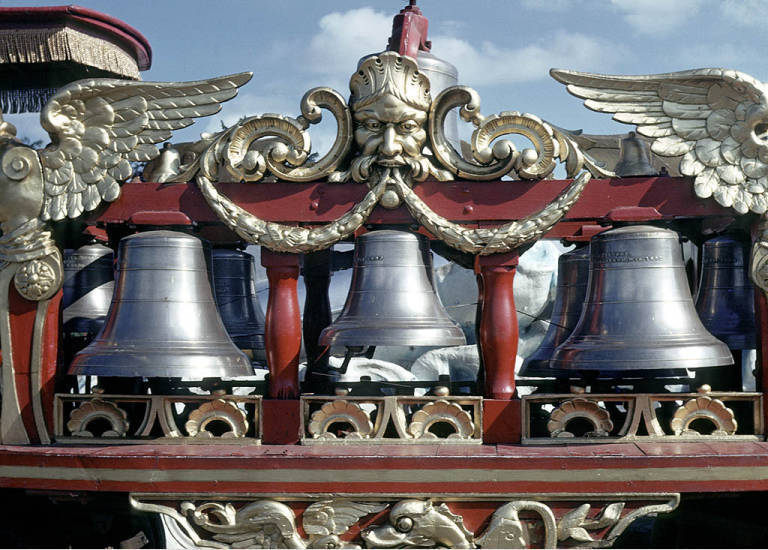20th Century Circuses in Illinois: Music
Music was an integral part of the circus. To this day, there are still certain tunes and instruments that are strongly associated with circus culture. For North Americans, “clown music,” or “circus music” brings to mind specific melodies, even if one has never attended a circus. Although these tunes may sound simple, with many repeated notes and a lack of variation, much thought was put into their arrangement. Different parts of the show had music to match—slower, plodding music for elephants, with soaring pieces for the trapeze artists. During the late 1800s, this music would have been put together by band members who were earning around $2.50 per performance.
One of the instruments most closely associated with circuses is the calliope. The calliope (whose name stems from the two Greek words “beautiful” and “voice”) originated during the mid-19th century, when steam was being used to power anything and everything. The piercing tones of this instrument could be heard for miles—different forms of calliopes were even used as announcement whistles on boats during this period.
Red Calliope. Sverre O. Braathen, photographer. September 6, 1943. Illinois State University.
The steam calliope, which traveled with circuses in an elaborately decorated bandwagon, was incredibly loud. There was no way to regulate the volume, so its music was often heard by guests before they even saw the circus. The calliope served as an announcement for the show, like an auditory billboard, thus allowing circuses to attract more than just literate audiences.
Steam Calliope. Sverre O. Braathen, photographer. 1955. Illinois State University.
In writing about circus music, historian Helen Stoddart notes how it was sometimes in conflict with another type of music—that of the church. The calliope was similar to the church organ, but it played lively, even rowdy music. Stoddart writes that it perhaps is not a surprise then that “much of the objection to the American circus in the mid nineteenth century came from Christian groups made uneasy by this rival to the public’s attention” [2].
Bandwagon. Sverre O. Braathen, photographer. 1963. Illinois State University.
This image shows a close up of the chimes wagon, a moveable, pedal-controlled instrument that was constructed circa 1892 for the Ringling Bros. by the Moeller Wagon Company. The Moeller Wagon Company, which was based in Baraboo, Wisconsin, was run by cousins of the Ringling Bros.
Chimes Wagon. Sverre O. Braathen, photographer. July 30, 1949. Illinois State University.
[2] Stoddart, Rings of Desire, 89.




